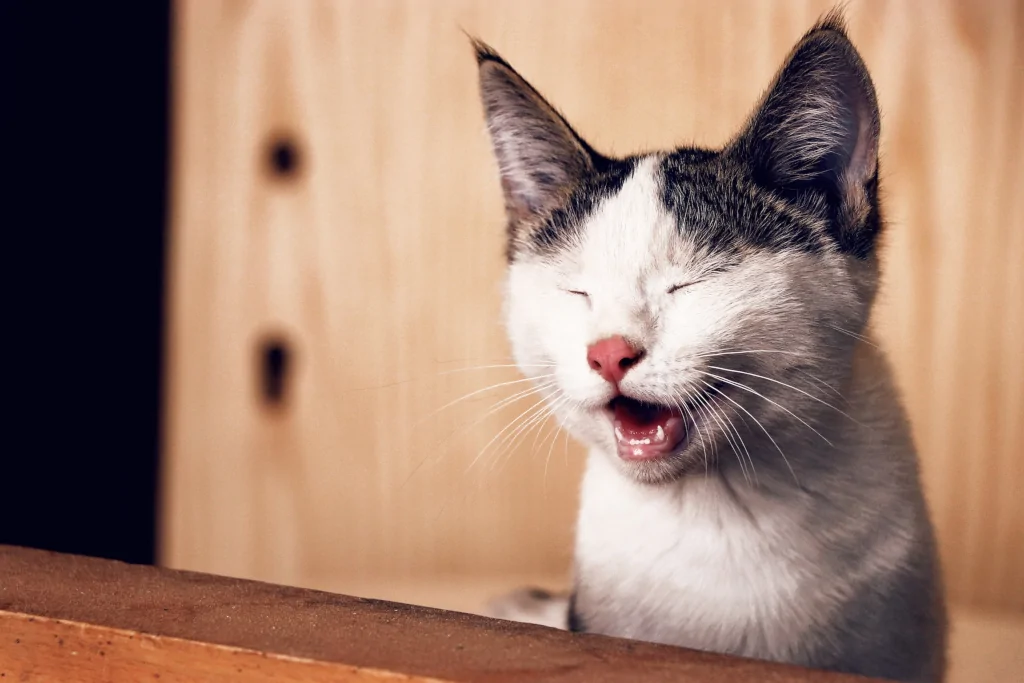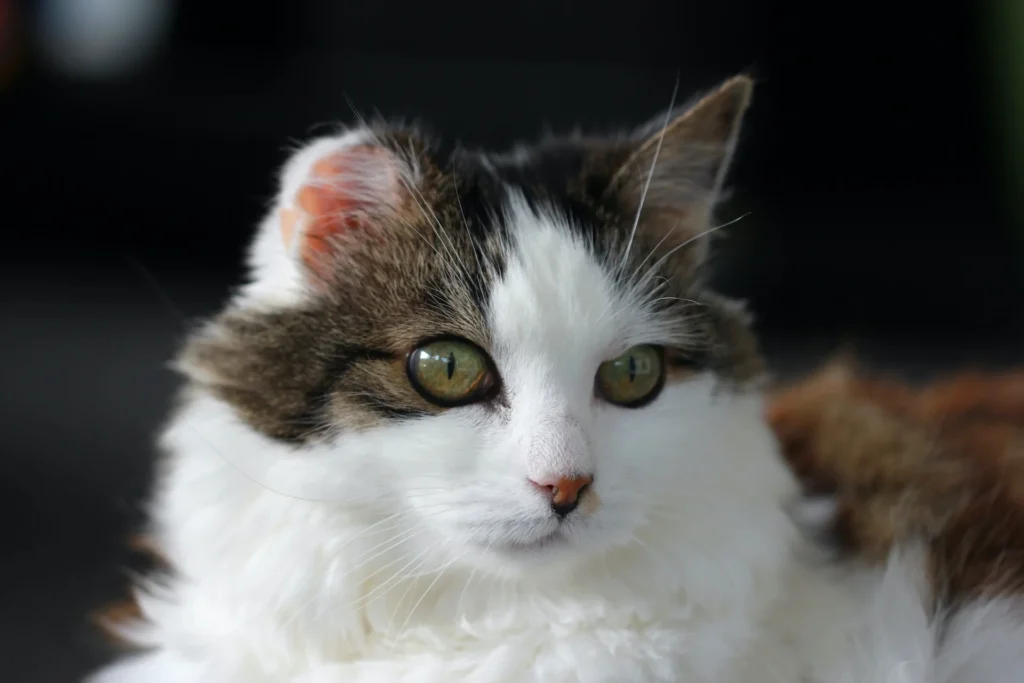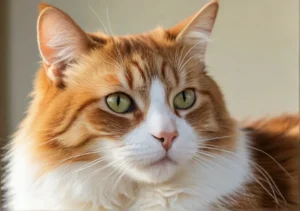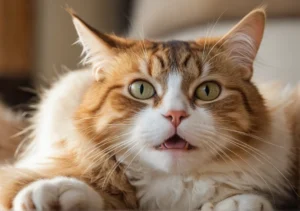As a cat owner, you’ve probably marveled at the diverse sounds your feline friend can produce, from soothing purrs to demanding meows.
Deciphering these vocalizations can sometimes feel like learning a new language, but understanding your cat’s communication is essential for bonding and attending to their needs.
Let’s dive into the fascinating world of feline chatter and discover the secrets behind those captivating sounds.

The Comforting Purr
A cat’s purr is a soothing and familiar sound for cat owners. It often signifies contentment, happiness, or relaxation.
Cats typically purr when they are comfortable and secure in their environment, such as when they are cuddled up with their favorite person or enjoying a cozy nap.
This gentle, rhythmic sound can create a sense of calm and peace, not just for the cat but also for the person who is lucky enough to share that moment with them.
Why Do Cats Purr?
Purring is often associated with contentment, but it’s not just a sign of a happy cat.
Cats also purr when they’re in pain, frightened, or even when nursing their kittens. It’s believed that purring serves as a self-soothing mechanism and helps strengthen the bond between a mother cat and her kittens.
When I first brought Smokey home, my male cat, he was just a tiny kitten. As he adjusted to his new environment, he would purr loudly whenever he curled up on my lap. I could feel the warmth and love radiating from him as his purrs vibrated through my legs.
Those moments not only comforted Smokey but also helped strengthen our bond, creating a strong foundation for our relationship.
The Healing Power of Purring
Did you know that a cat’s purr has healing properties? Research suggests that the vibrations from a purring cat, usually between 25 and 150 Hertz, can promote healing, reduce inflammation, and even help alleviate pain.
This may explain why cats purr when they’re in distress, as the vibrations could help them cope with pain or discomfort.
So, next time your cat curls up beside you and starts to purr, remember that they’re not only expressing their happiness, but they might also be sharing some healing vibes with you.
The Versatile Meow
Cats have an incredible range of vocalizations, and the meow is perhaps the most well-known and versatile of all.
The meow can convey a variety of messages, from affection to frustration. By understanding the different types of meows, you can better understand your feline companion and respond to their needs more effectively.
Attention-Seeking Meows
Cats are experts at capturing our attention with their meows.
These vocalizations often indicate that your cat wants something from you, be it food, playtime, or affection.
Attention-seeking meows often have a distinct, higher-pitched tone that sets them apart from other types of meows. Cats may elongate the sound or vary the pitch to grab your attention more effectively.
These meows can be insistent and persistent, as your cat tries to communicate their desires to you.
For instance, my male cat Smokey has a unique meow that he uses when he wants to play fetch. The moment I hear that specific meow, I know it’s time to grab his favorite toy mouse and start the game. I also taught him to meow on command.

Demanding or Complaining Meows
When a cat is unsatisfied or frustrated, they may express their feelings with demanding or complaining meows.
These sounds can be louder, more insistent, or even have a whining quality.
It’s important to pay attention to the context in which these meows occur to understand what your cat is trying to communicate. If your cat is sitting by their empty food bowl and meowing loudly, they’re likely letting you know that it’s time for a meal.
As you decipher the enigmatic language of meows, you’ll unlock the secrets to your cat’s heart and mind, making life with your feline friend a delightful symphony of shared understanding.
Let’s take a quick glance at some of the most common cat sounds and their meanings:
| Cat Sound | Likely Meaning |
|---|---|
| Short Meow | Standard greeting. “Hello!” |
| Multiple Meows | Excited greeting. “Great to see you!” |
| Mid-pitch Meow | Plea for something. “I’m hungry or I want attention.” |
| Drawn-out Mrrroooow | Demand for something. “Open the door NOW!” |
| Low Mrrroooow | Complaint of a wrong you’ve done. “You’re late with dinner!” |
| High-pitch RRRROWW! | Anger or pain. “That’s my tail you stepped on!” |
| Chatter (rapid teeth-chattering) | Excitement, frustration. “Look at those birds outside the window!” |
| Purr | Contentment and comfort. “I’m happy and comfortable.” |
| Hiss | Fear, anger. “Stay away from me!” |
| Yowl (long, drawn-out moan) | Worry, discomfort, territorial declaration. “I don’t feel good/This is my space!” |
Remember that the meaning of their sounds can also change based on context and their body language, which you should also take into account.
As you decipher the enigmatic language of meows, you’ll unlock the secrets to your cat’s heart and mind, making life with your feline friend a delightful symphony of shared understanding.
Chirps and Chatters: Expressing Excitement
Cats often make chirping or chattering sounds when they’re excited or stimulated by something in their environment. This behavior is particularly common when cats spot birds or other prey animals outside.
Chirping and chattering are believed to be an instinctual response that helps cats practice their hunting skills.
For example, when a cat watches a bird through a window, they may chirp or chatter as they mimic the act of catching their prey, allowing them to refine their coordination and timing even when they’re not actively hunting.
Paying attention to when and where your cat exhibits this behavior can help you identify what excites or interests them, and you can use this knowledge to provide them with engaging and enriching experiences.
Hissing and Growling: Signs of Distress or Aggression
When a cat hisses or growls, it’s a clear sign that they’re feeling threatened, fearful, or aggressive. They can even show this growling behavior with toys.
These vocalizations serve as a warning to other animals or humans to back off and give the cat some space. If you notice your cat hissing or growling, you should try to identify and address the cause of their discomfort.
Remember to approach your cat cautiously and avoid cornering or attempting to restrain them, as this can exacerbate the situation.
Instead, try to create a calming environment and give them time to regain their composure.
As you venture into the fascinating world of feline communication, you’ll discover that every purr, meow, and hiss is a unique note in the song of your cat’s life. Listen closely and cherish the harmony that unfolds between you and your whiskered companion.
Suggested read: Why cats say ‘No’ & ‘Nom Nom Nom’
Here’s Jackson Galaxy with some more insight into cat vocalizations:
FAQs
Why does my cat meow loudly at night?
Cats may meow loudly at night due to hunger, boredom, loneliness, or their natural nocturnal instincts.
Can I teach my cat to be quieter?
You can teach your cat to be quieter by reinforcing quiet behavior, providing sufficient mental and physical stimulation, and establishing a consistent routine. To encourage positive behavior, you can start with rewards and praise through positive reinforcement.
Is purring always a sign of happiness?
While purring often indicates happiness, cats may also purr when they’re in pain, stressed, or seeking comfort.
Why does my cat chirp or chitter at birds?
Cats chirp or chitter at birds as an instinctual response, mimicking the act of catching prey and honing their hunting skills.
Alex, a passionate animal lover, has experience in training and understanding animal behavior. As a proud pet parent to two dogs and three cats, he founded AnimalReport.net to share insights from animal experts and expand his knowledge of the animal kingdom.





Great article! I learned so much from it. Your in-depth analysis and thoughtful insights were very helpful. I appreciate the effort you put into writing this and sharing it with us. Thank you for your hard work and dedication to providing valuable content.